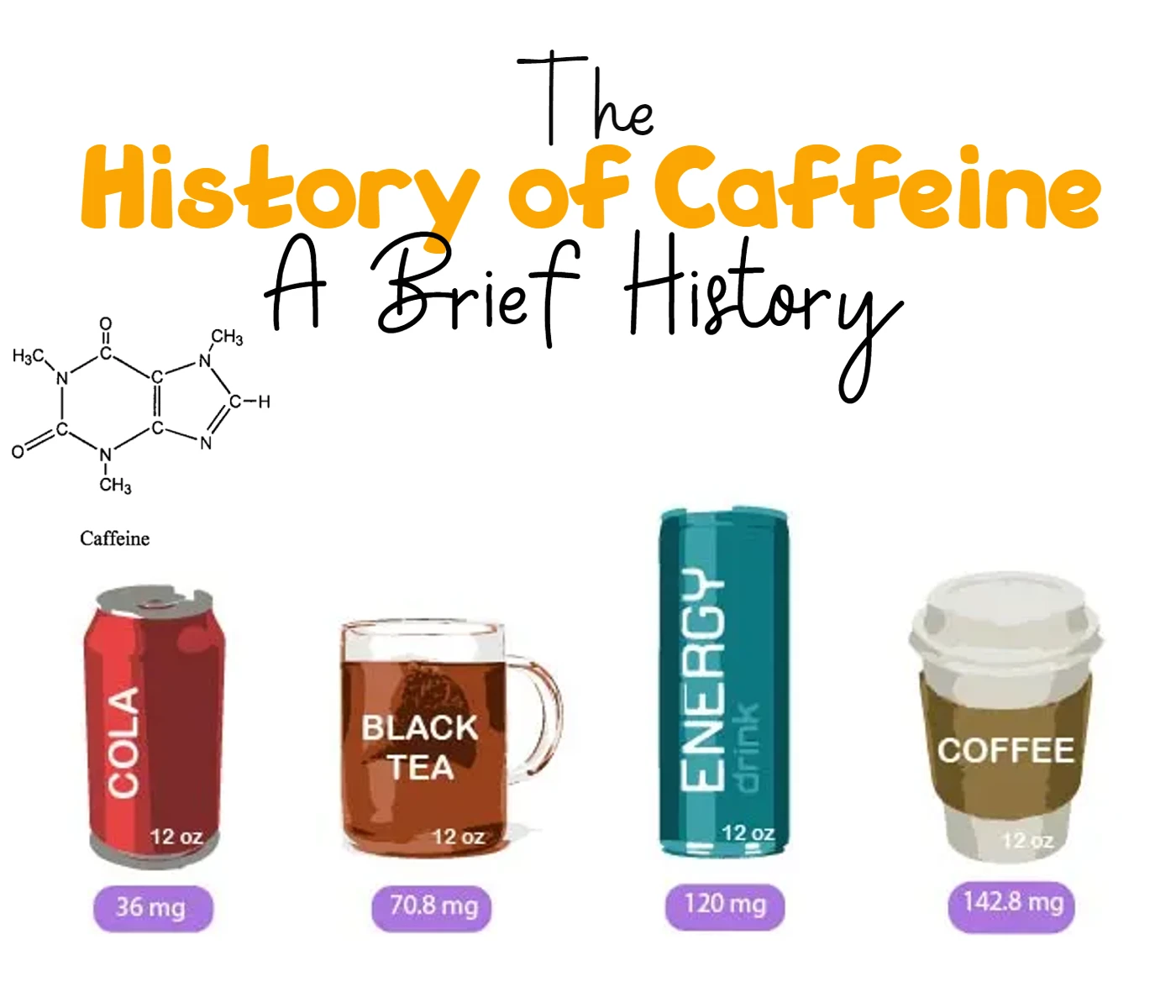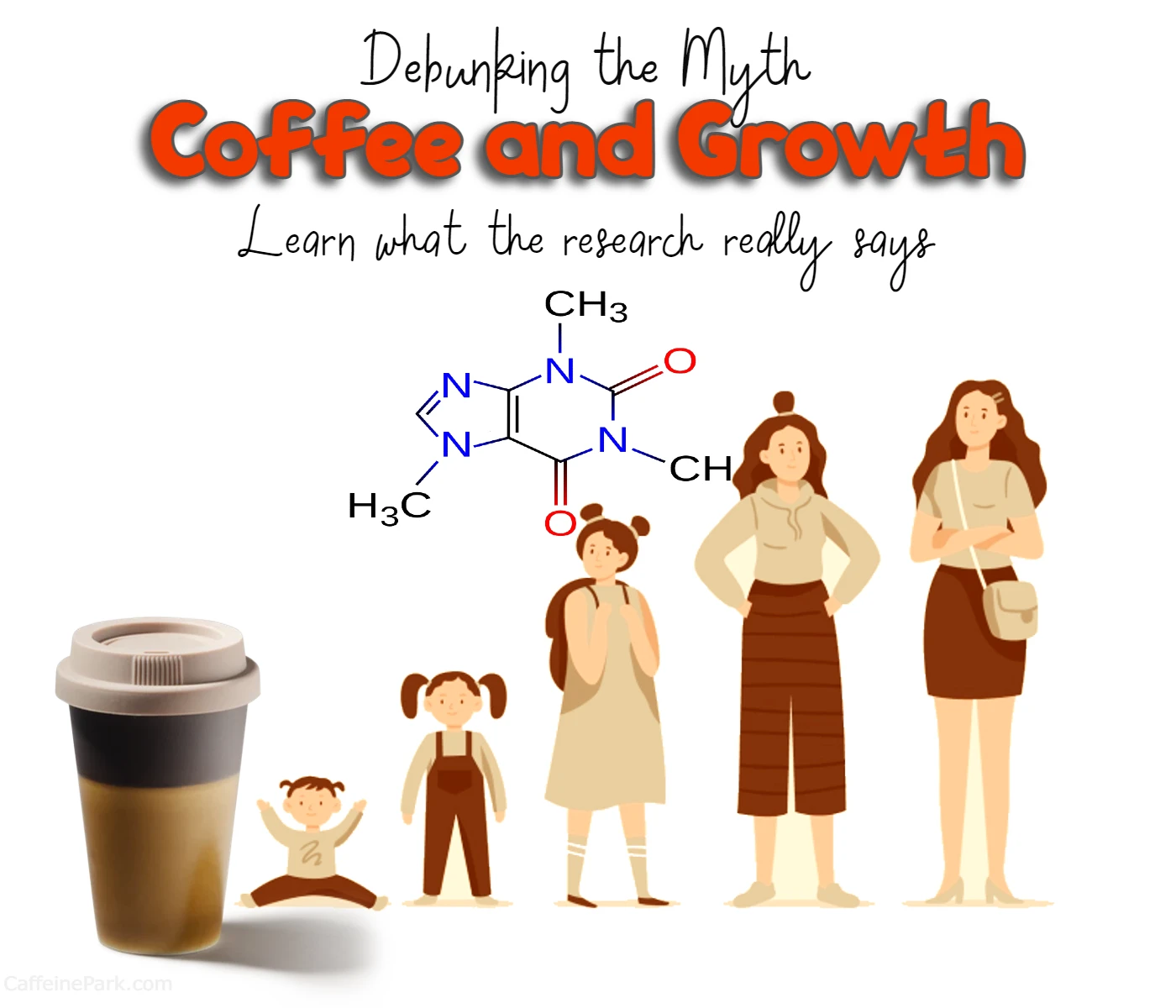
Hey there, coffee lovers! Are you ready to delve into the fascinating history of caffeine? As we kick off Caffeine Awareness Month, I am excited to share with you the origins of this beloved compound and how it ended up becoming one of the most widely known substances on earth.
First things first, let’s review what caffeine is and why it’s so popular. Caffeine, also known as 1,3,7-Trimethylxanthine or the key ingredient in your Triple Mocha Frappuccino, is one of the most widely consumed food components across the globe. It is considered the most widely used psychoactive compound, meaning it has an effect on your central nervous system that alters your perceptions of fatigue.
Interestingly, caffeine is also one of the most heavily researched food components in the scientific literature. In other words, we know a lot about it. And it’s a good thing we do, because according to data from the US, 85% of the population drinks a minimum of one caffeinated beverage daily, with coffee and tea being the highest contributor in all age groups. Globally, over 2 billion cups of coffee are served up daily, making it the most frequently consumed food or beverage (Heckman et al., 2010; ICA, 2009-2010).
Now, let’s take a look at the origins of caffeine and how we got to where we are today.
Here are some facts about the history of caffeine:
| Fact | Description |
|---|---|
| Caffeine is a naturally occurring compound | Caffeine is found in more than 60 different plants, including coffee beans, tea leaves, and cocoa beans. |
| Caffeine has been consumed for thousands of years | The consumption of plants containing caffeine is believed to date back to the Stone Age. |
| Coffee was first discovered in Ethiopia | According to legend, coffee was first discovered in Ethiopia in the 9th century by a goat herder who noticed the energizing effects on his goats. |
| Coffee became popular in the Middle East | Coffee was first brewed as a beverage in the Middle East in the 15th century and quickly became popular among the upper class. |
| Coffee spread to Europe in the 17th century | Coffee was first introduced to Europe in the 17th century and quickly became a staple beverage in many countries. |
| Tea was first consumed in China | Tea was first consumed in China more than 4,000 years ago and was introduced to the Western world in the 16th century. |
| Tea became popular in England in the 17th century | Tea became a popular beverage in England in the 17th century and remains a staple in British culture today. |
| The first caffeinated soda was created in the US | The first caffeinated soda, called Moxie, was created in the United States in 1884. |
| The average American drinks over 2 cups of coffee per day | Coffee is one of the most popular beverages in the United States, with the average American drinking more than 2 cups per day. |
| Caffeine is considered a psychoactive compound | Caffeine is the most widely used psychoactive compound in the world and is known for its ability to alter perceptions of fatigue. |
The Natural Occurrence of Caffeine
Caffeine occurs naturally in over 60 different plants that grow in diverse locations across the globe. Some of these plants include coffee and cocoa beans, tea leaves, cola nuts, guarana, and the fruit of numerous other plants that are not necessarily related to each other.
The curious thing is that this cluster of botanical wonders doesn’t have much association with each other. Genomic researchers, including the team led by Denoeud et al in 2014, concluded that this seemingly unrelated group of plants evolved independently, but in the same direction, to produce caffeine in order to deter predators from consuming their leaves.
Although caffeine has been present in various plant species for a long time, it’s thought that humans may have consumed caffeine as early as the stone age, when our earliest ancestors may have noticed that the consumption of certain plants contributed to a decrease in fatigue and improved focus.
A Brief History of Caffeine in Human Culture
It wouldn’t have been until much later that beverages made from these plants, namely coffee, and tea, would become popularized. Perhaps surprisingly to some, this popularization occurred well before the conception of a popular green-themed west coast brand.
In fact, many of the original accounts of caffeine use in written history emphasize its pharmacological and medical properties, which were appreciated if not fully understood as far back as the 15th and 16th centuries when it may have first been consumed globally.
Coffee, for example, was considered a luxury reserved for the upper class in Arabia and did not become widespread in Europe until the 18th and 19th centuries. Tea, on the other hand, was believed to be widely popularized in the 1300s and beyond in Ming Dynasty China.
The Legend of Shen Nung
According to legend, in 2737 BC, Chinese Emperor Shen Nung was boiling drinking water when leaves from a nearby bush fell in, accidentally brewing tea for the first time. This happy accident led to tea becoming a staple beverage in China and eventually spreading to the rest of the world.
The Rise of Coffee
The rise of coffee is a story that begins in the Middle East and spans centuries. Coffee’s origin is thought to be in Ethiopia, where it was first discovered in the Kaffa region of the country.
As mentioned, coffee was not widely consumed in Europe until the 18th and 19th centuries. However, once it did take hold, it quickly became a beloved beverage.
It is believed that the first coffee house was opened in Istanbul, Turkey, in the mid-15th century. From there, coffee houses spread throughout the Middle East and into Europe.
In the beginning, coffee houses were primarily frequented by men and were seen as places to engage in intellectual discussions and debates. They were often referred to as “penny universities” because, for the price of a cup of coffee, one could engage in stimulating conversation and learn from others.
The popularity of coffee houses quickly spread throughout Europe, with England being one of the first countries to embrace the beverage. In fact, in the late 17th and early 18th centuries, there were thousands of coffee houses in London alone.
As the popularity of coffee grew, so did the demand for it. Coffee plantations were established in many tropical regions, including Africa, the Caribbean, and South America, and the slave trade was used to provide the labor needed to cultivate the crops.
The Dark Side of Caffeine Production
The production of coffee and other caffeinated beverages has not always been ethical or sustainable. As mentioned, the slave trade was used to provide the labor needed to cultivate coffee crops in many regions.
In addition, the expansion of coffee plantations has led to deforestation and the destruction of natural habitats. The heavy use of pesticides and fertilizers has also had negative environmental impacts.
More recently, there has been a growing movement toward fair trade and sustainable coffee production. Fair trade ensures that farmers are paid a fair price for their crops and that labor practices are ethical. Sustainable coffee production focuses on minimizing environmental impacts and promoting biodiversity.
The Popularity of Tea
While coffee was gaining popularity in Europe, tea was also becoming a beloved beverage, particularly in England.
Tea was first introduced to England in the mid-17th century, and it quickly became a symbol of wealth and status. The British East India Company played a major role in the expansion of tea production and trade, and by the 18th century, tea was being imported in large quantities to England.
Tea played an important role in the social lives of the British, with afternoon tea becoming a beloved tradition. It was also believed to have medicinal properties and was used to treat a variety of ailments.
Tea quickly became a major commodity, with the British using it as a means of trade with China. This led to the Opium Wars, in which the British fought to maintain their control over the tea and opium trades with China.
The Modern Age of Caffeine
Today, caffeine is more popular than ever, with coffee and tea remaining the most commonly consumed caffeinated beverages.
In addition to coffee and tea, there are now a wide variety of other beverages and products that contain caffeine, including energy drinks, soft drinks, and even snacks.
The health effects of caffeine have been extensively studied, with some studies suggesting that moderate caffeine consumption may have health benefits, such as reducing the risk of certain diseases.
However, it is important to note that caffeine can also have negative health effects, particularly when consumed in excess. Some people are more sensitive to caffeine than others and may experience negative effects even with moderate consumption.
Final Thoughts
The history of caffeine is a long and complex one, spanning centuries and continents. From its origins in ancient plant species to its modern-day ubiquity, caffeine has had a major impact on human history and culture.
While caffeine consumption can have both positive and negative health effects, it is clear that it will continue to be a major part of our lives for the foreseeable future.
Facts
- Caffeine occurs naturally in more than 60 different plants that grow in diverse locations across the globe, including coffee and cocoa beans, tea leaves, cola nuts, guarana, and the fruit of numerous other plants.
- Genomic researchers have concluded that this seemingly unrelated group of plants evolved independently, but in the same direction, to produce caffeine in order to deter predators from consuming their leaves.
- Historians posit that humans consumed caffeine as early as the stone age when our earliest ancestors may have noticed the consumption of certain plants contributed to a decrease in fatigue and improved focus.
- The legend has it that in 2737 BC, Chinese Emperor Shen Nung was boiling drinking water but leaves from a nearby bush fell in, accidentally brewing tea for the first time.
- Many of the original accounts of caffeine use in written history emphasize its pharmacological and medical properties, which were appreciated if not fully understood as far back as the 15th and 16th centuries when it may have first been consumed globally.
- Coffee was considered a luxury reserved for the upper class in Arabia and did not become widespread in Europe until the 18th and 19th centuries.
- Tea was believed to be widely popularized in the 1300s and beyond in Ming Dynasty China.
- Caffeine is the most widely used psychoactive compound, which simply means that it has an effect on your central nervous system as it relates to altering your perceptions of fatigue.
- According to data out of the US, 85% of the population drinks a minimum of one caffeinated beverage daily, with coffee and tea being the highest contributor in all age groups.
- Globally, over 2 billion cups of coffee are served daily and it is the most frequently consumed food or beverage.
FAQs
Caffeine is a natural stimulant that occurs in over 60 different plant species around the world, including coffee beans, tea leaves, and cocoa beans.
Historians believe that humans have been consuming caffeine since the Stone Age, when our earliest ancestors may have noticed that certain plants contributed to decreased fatigue and improved focus.
Legend has it that Chinese Emperor Shen Nung discovered tea in 2737 BC when leaves from a nearby bush accidentally fell into his boiling drinking water.
Coffee was initially popularized in the Arab world and was considered a luxury item reserved for the upper class. It did not become widely consumed in Europe until the 18th and 19th centuries.
Tea was believed to be widely popularized in the 1300s and beyond in Ming Dynasty China.
Caffeine was first isolated and studied in the early 19th century, leading to a greater understanding of its effects on the body.
Caffeine is one of the most widely consumed food components in the world and is found in a variety of beverages and food products. It is used as a stimulant to improve mental alertness and physical performance.
Read More:





